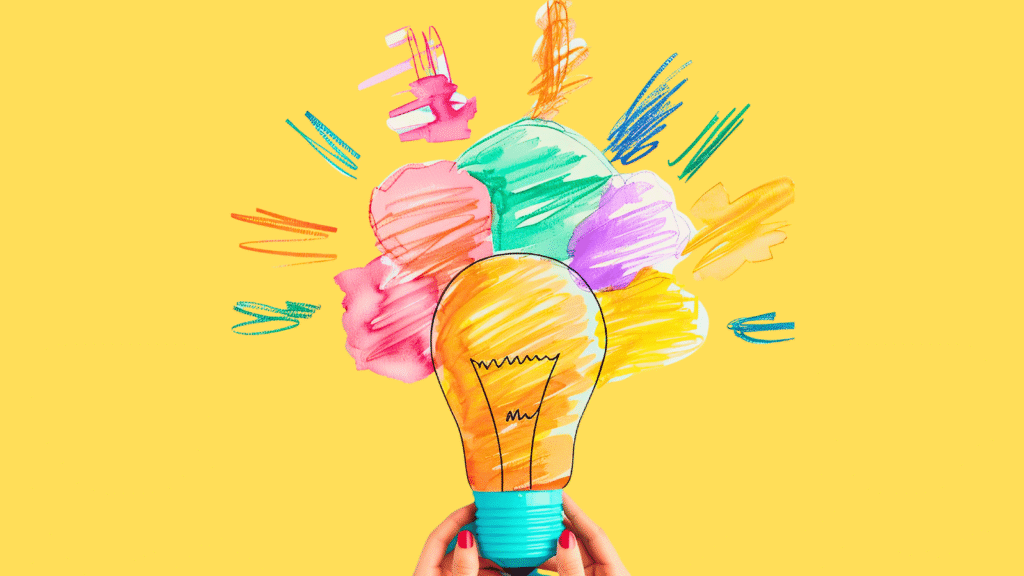In a world where distractions are endless and demands on our time continue to grow, the ability to stay productive has become more valuable than ever. The truth is, productivity is not just about working longer hours or filling your calendar with endless to-dos—it’s about creating a framework that allows you to focus on what matters most, use your energy wisely, and achieve meaningful results without burning out. A strong productivity framework is like a blueprint for success: it gives you direction, structure, and clarity so you can maximize efficiency while protecting your mental well-being.
- Understanding the Core Principles of Productivity
- The Power of Goal-Oriented Planning
- Time Management Systems for Maximum Efficiency
- The Role of Focus and Deep Work
- Energy Optimization and Mindset Mastery
- The Decision-Making Matrix for Prioritization
- Leveraging Technology for Smarter Productivity
- Continuous Improvement and Performance Tracking
- Building Sustainable Habits for Lasting Productivity
- Final Thoughts
- FAQs
Understanding the Core Principles of Productivity
At its heart, productivity is about getting the right things done, not just filling every minute with activity. Many people confuse being busy with being productive, but the two are very different. True productivity rests on a few fundamental principles that act as the foundation for any framework. When you understand these, you can build systems that last and adapt to your lifestyle.
The first principle is clarity of purpose. Without clarity, it’s easy to spend hours on low-value tasks that don’t bring you closer to your bigger goals. Clear direction allows you to filter opportunities, eliminate distractions, and say no to what doesn’t matter. It’s like having a compass that keeps you pointed toward meaningful outcomes.
The second principle is focused attention. Human brains are not designed for multitasking; instead, they thrive on deep, sustained concentration. Every time you switch between tasks, you lose momentum and energy. Focus means giving your full attention to one activity at a time, which not only improves quality but also reduces the time needed to complete it.
The third principle is sustainable energy. Even the best systems fall apart if your body and mind are exhausted. Energy fuels everything—your ability to concentrate, solve problems, and stay motivated. Sleep, nutrition, movement, and recovery are not luxuries; they are essential ingredients of productivity.
To make these three principles easier to visualize, here’s a simple breakdown:
- Clarity → Decide what matters most.
- Focus → Direct attention without distraction.
- Energy → Maintain the stamina to execute consistently.
Together, these principles form a triangle. If one side is missing, the entire structure collapses. A productivity framework that balances clarity, focus, and energy doesn’t just help you get more done—it helps you achieve the right results in a way that feels sustainable and rewarding.

The Power of Goal-Oriented Planning
Goal-oriented planning is the foundation of any strong productivity framework because it gives every action a sense of purpose. Without goals, even the busiest schedules can feel hollow, leading to exhaustion without meaningful progress. When you start with a clear destination in mind, daily tasks stop feeling like random chores and instead become intentional steps toward something greater. This clarity not only boosts focus but also eliminates the stress of constant decision-making since you already know what truly matters.
One of the best ways to strengthen goal-oriented planning is by aligning short-term actions with long-term ambitions. Instead of treating goals as abstract ideas, break them into actionable milestones that guide your weeks and days. For example, if your long-term goal is to write a book, the daily milestone might be writing 500 words. Small actions like this compound into significant results, turning ambition into achievement.
It’s also useful to prioritize goals based on importance and urgency. A simple way to organize this is through a table that highlights where your attention should go:
| Goal Type | Action Example | Focus Level |
|---|---|---|
| Long-Term Strategic Goal | Building a business or career growth | High |
| Mid-Term Milestone Goal | Completing a project or course | Medium |
| Short-Term Daily Goal | Writing a report or workout session | Consistent |
Another powerful tactic is to connect goals with your personal values. When your goals are rooted in what matters to you, they become easier to sustain over the long run. For instance, if health is a core value, committing to a daily walk or nutritious meals feels purposeful rather than like another obligation.
Finally, review your goals regularly. Life changes, and so should your priorities. A quick weekly reflection on what’s working and what needs adjustment keeps your goals relevant and ensures you’re not chasing outcomes that no longer align with your bigger vision.
If you often find yourself delaying important tasks even when you know your goals, my book The Procrastination Reset is an excellent companion. It offers step-by-step methods to overcome procrastination so you can actually follow through on the goals you set.
Time Management Systems for Maximum Efficiency
Time management is often the backbone of any productivity framework. Without it, even the most ambitious goals can remain out of reach. The challenge many people face is not the lack of time, but the absence of structure around how they use it. Having a system ensures you’re working with intention rather than reacting to whatever comes your way.
One of the most effective systems is time blocking, where your day is divided into specific chunks dedicated to particular tasks. This method helps eliminate decision fatigue because you already know what needs your attention at any given moment. Similarly, the Pomodoro Technique adds structure by breaking work into focused intervals, usually 25 to 50 minutes, followed by short breaks. It’s particularly useful for those who struggle with maintaining concentration over long periods.
Another powerful approach is task batching, where you group similar activities together. For example, answering emails, returning calls, or scheduling meetings can be batched into one time slot instead of scattered throughout the day. This reduces the mental cost of switching between tasks and helps maintain momentum.
To illustrate how these systems can complement each other, consider this simple comparison:
| System | Best For | Main Benefit |
|---|---|---|
| Time Blocking | Planning full days around priorities | Reduces indecision and procrastination |
| Pomodoro Technique | Maintaining focus in short bursts | Prevents burnout, boosts concentration |
| Task Batching | Handling repetitive, routine activities | Saves energy, minimizes context shift |
The key is not to use every system all at once but to experiment and find what fits your working style. Some days may call for time blocking, while others may benefit from short Pomodoro sessions. Flexibility is important, but consistency in whichever method you choose is what delivers results.

The Role of Focus and Deep Work
Focus is one of the most valuable skills in a world full of distractions. Every notification, email, or quick scroll through social media competes for your attention, making it harder to give your best effort to the tasks that really matter. Deep work is the antidote to this problem. It’s the practice of working with complete concentration on a cognitively demanding task without distractions. When you commit to deep work, your brain enters a state of flow where you can produce high-quality results in less time.
The benefits of deep work go beyond just efficiency. It helps you strengthen your ability to think critically, solve complex problems, and generate creative ideas. These are skills that shallow multitasking simply cannot develop. By consistently practicing deep work, you sharpen your focus like a muscle, making it easier to concentrate for longer periods over time.
To practice deep work effectively, it’s important to create an environment that supports it. That might mean silencing notifications, keeping your phone out of sight, or setting a clear start and end time for your work session. It also helps to work in time blocks so your mind knows when it’s time to focus and when it can rest. Over time, this structure reduces decision fatigue and makes it easier to slip into a state of flow.
Here are a few practical ways to build deep work into your routine:
- Set a timer for 60–90 minutes of uninterrupted focus on one important task.
- Eliminate or reduce distractions by using tools like website blockers.
- Schedule your deep work sessions during the time of day when you feel most energized.
- Train your focus gradually by starting with shorter sessions and building up.
Deep work is where your best ideas and most impactful results come to life. By protecting time for focus, you ensure that you’re not just staying busy, but producing meaningful, high-value work that moves you closer to your biggest goals.
If distractions feel overwhelming for you, Digital Detox for the Restless Mind can be an invaluable resource. In this book, I share strategies to cut through digital noise, regain control of your attention, and use technology in a way that supports—not sabotages—your productivity.
Energy Optimization and Mindset Mastery
Energy is the true currency of productivity. You may have the sharpest strategy or the most detailed to-do list, but if your energy is depleted, execution becomes impossible. Optimizing energy means looking at productivity from a holistic perspective, considering both physical stamina and mental resilience. When we learn to manage energy rather than just time, we create sustainable momentum that allows us to perform consistently instead of relying on bursts of effort followed by burnout.
Physical energy begins with the basics of good health. Sleep is non-negotiable because it directly impacts memory, focus, and decision-making. Nutrition plays a powerful role in stabilizing energy levels throughout the day—foods rich in protein, healthy fats, and complex carbohydrates keep your body and brain fueled. Regular exercise, even something as simple as daily stretching or a brisk walk, improves circulation and prevents the sluggishness that comes from being sedentary. Together, these habits form the foundation that allows you to bring energy into every task.
Mental energy is equally important. Stress, overthinking, and constant worry can drain focus faster than physical fatigue. Developing mindfulness practices like meditation or journaling helps quiet the noise and recharge your mind. Managing your workload with realistic expectations is also essential. Overcommitting leads to exhaustion, while pacing yourself ensures you can stay sharp over the long term.
Mindset ties all of this together. A growth mindset transforms challenges into opportunities and setbacks into lessons. Instead of seeing obstacles as proof of inadequacy, you begin to see them as part of the process of improvement. This reduces stress and builds resilience. When combined with high energy levels, a positive and adaptive mindset allows you to stay consistent, confident, and productive even in high-pressure situations.
Here are some simple strategies for energy and mindset mastery:
- Get 7–9 hours of quality sleep each night.
- Eat balanced meals with whole, nutrient-dense foods.
- Incorporate movement breaks throughout your day.
- Practice mindfulness to recharge mental clarity.
- Reframe challenges as opportunities for growth.
If maintaining calm energy and focus is a struggle for you, The Quiet Mind Toolkit is a valuable resource. It offers practical exercises to release stress and sharpen mental clarity, making it easier to sustain energy and a positive mindset as part of your productivity framework.

The Decision-Making Matrix for Prioritization
A key part of any productivity framework is learning how to separate the truly important work from the noise that constantly competes for your attention. This is where the decision-making matrix, often called the Eisenhower Matrix, becomes an invaluable tool. By classifying tasks based on urgency and importance, it gives you a clear picture of where your time should go each day. Without this filter, it’s easy to get stuck in a cycle of responding to whatever feels urgent, rather than advancing the projects and goals that actually matter.
Here’s how the matrix breaks down:
- Urgent and Important – These tasks demand immediate attention and often relate to deadlines or crises. They must be handled right away to avoid major consequences.
- Important but Not Urgent – These tasks are the foundation of long-term success. Strategic planning, learning, and relationship building often fall here. They don’t scream for attention, but they’re where growth happens.
- Urgent but Not Important – These are interruptions, like sudden requests or minor issues that feel pressing but don’t align with your larger goals. Delegating these tasks whenever possible saves your energy for what matters.
- Neither Urgent nor Important – These are distractions disguised as work. Excessive scrolling, unnecessary meetings, or busywork usually land here and should be minimized or eliminated.
When used consistently, this framework reshapes the way you see your daily workload. Instead of treating everything as equally important, you begin to focus your best energy on the tasks that create the greatest long-term value. Over time, this not only reduces stress but also makes your productivity framework more intentional and results-driven.
Leveraging Technology for Smarter Productivity
Technology is one of the most powerful allies in any productivity framework, but it needs to be used with intention. The right tools can automate repetitive work, organize complex projects, and help you stay focused on priorities. However, too many apps or poorly chosen tools can create more clutter and actually harm efficiency. The goal is to find a balance—using technology in a way that complements your workflow instead of complicating it.
Project management platforms like Notion, Trello, or Asana keep tasks centralized, so nothing slips through the cracks. These tools also make collaboration smoother, ensuring that teams can stay aligned without endless meetings or email chains. For individuals, having one central hub for tasks eliminates the stress of juggling multiple to-do lists.
Automation is another game-changer. With tools like Zapier or IFTTT, you can connect apps and create workflows that run automatically in the background. For example, saving email attachments directly to cloud storage, or sending meeting notes to your project board, can cut down on repetitive manual work.
Focus tools are also essential when working in a world full of digital distractions. Apps like Freedom, Cold Turkey, or Forest block distracting websites or apps during focus sessions, making it easier to commit to deep work without temptation. Paired with methods like the Pomodoro technique, these tools help create structured blocks of concentration that fuel higher output.
Here’s a quick snapshot of how different types of tools fit into a productivity framework:
| Tool Type | Examples | Primary Benefit |
|---|---|---|
| Project Management | Notion, Trello, Asana | Organize and track tasks |
| Automation | Zapier, IFTTT | Reduce repetitive manual work |
| Focus & Distraction Apps | Freedom, Forest, Cold Turkey | Protect deep work and minimize distractions |
| Knowledge Management | Evernote, Obsidian | Store and retrieve important information |
Technology should be viewed as a support system, not a crutch. The goal isn’t to have the latest app but to choose tools that genuinely help you work smarter. By selecting a handful of tools that align with your goals and habits, you can eliminate friction and build a streamlined digital environment that maximizes your productivity.

Continuous Improvement and Performance Tracking
Continuous improvement is the backbone of any high-functioning productivity framework. It ensures that your system evolves with your goals and life circumstances, preventing stagnation. Without this ongoing evaluation, even the most carefully designed routines can become outdated or inefficient. By regularly tracking performance, you gain insight into patterns, bottlenecks, and opportunities for growth, allowing you to optimize your workflow over time.
A practical approach to continuous improvement involves scheduled reviews at different intervals. Weekly reviews help identify short-term wins and areas where focus slipped. Monthly reflections give a broader perspective, highlighting trends in productivity and energy management. Quarterly assessments allow you to realign daily actions with long-term objectives and strategic priorities. These layered reviews create a feedback loop that keeps your system adaptive and effective.
Performance tracking can be made simple yet insightful using metrics such as:
- Tasks completed vs. planned
- Time spent on high-priority activities
- Focused work hours per week
- Energy and mood ratings
| Metric | Purpose | Frequency | Actionable Insight |
|---|---|---|---|
| Tasks Completed vs Planned | Measure goal alignment | Weekly | Adjust priorities or workload |
| Time on High-Priority Tasks | Evaluate efficiency | Weekly | Restructure schedule for better focus |
| Focused Work Hours | Track deep work consistency | Weekly | Identify distractions and optimize routines |
| Energy & Mood Ratings | Monitor sustainability of effort | Daily/Weekly | Adapt work-rest balance for peak performance |
By combining these quantitative and qualitative insights, you can fine-tune your productivity framework to maximize efficiency and reduce wasted effort. Over time, this iterative process builds resilience and ensures that your productivity system remains aligned with your evolving goals and energy levels.
Integrating continuous improvement into your daily routine not only increases effectiveness but also fosters a mindset of growth and adaptability, which is critical for long-term success.
Building Sustainable Habits for Lasting Productivity
Building sustainable habits is the cornerstone of lasting productivity because habits reduce the need for constant motivation and decision-making. When productivity becomes habitual, it operates almost automatically, freeing mental energy for higher-value tasks. The key is to design small, actionable routines that align with your goals and gradually compound into significant results over time.
Consistency is more important than intensity. Starting with micro-habits, like spending five minutes planning your day or doing a single focused work session, ensures that the behavior is achievable and builds momentum. Over time, these small actions become ingrained, forming the foundation for larger, more impactful routines.
Tracking habits is also critical for long-term success. A simple checklist or habit tracker can provide immediate feedback and reinforce progress. Visual cues of consistency—like marking a calendar or logging completed actions—can significantly boost motivation and commitment.
| Habit Type | Example | Frequency | Benefit |
|---|---|---|---|
| Morning Routine | Journaling goals | Daily | Clarifies priorities |
| Focus Session | Deep work block | Daily | Enhances concentration |
| Health & Energy | Short walk or exercise | Daily | Sustains physical energy |
| Reflection | Weekly review | Weekly | Identifies improvements |
| Learning | Reading or skill practice | Daily/Weekly | Supports growth mindset |
Another key aspect is habit stacking—linking new behaviors to existing routines. For example, after brewing your morning coffee, spend five minutes reviewing priorities. Or after finishing lunch, take a short walk to reset your focus for the afternoon. This creates a natural flow, reducing friction and increasing adherence.
Finally, habits should evolve with your goals. As priorities shift, update routines to stay aligned with what matters most. Sustainable habits are not rigid rules; they are flexible structures designed to consistently support productivity, focus, and well-being over the long term.
My book Small Habits, Big Energy provides actionable strategies to design, track, and maintain these habits, making productivity feel effortless and natural rather than forced.

Final Thoughts
The ultimate productivity framework is more than a collection of tools and techniques—it’s a mindset and a way of approaching each day with intention. By combining clarity, structured planning, focused work, energy management, and habit-building, you create a system that supports consistent progress toward your goals without overwhelming you.
Productivity is not about filling every moment with activity; it’s about making purposeful choices that move you forward while preserving your mental and physical well-being. When implemented thoughtfully, this framework allows you to accomplish more in less time, maintain balance, and build momentum that compounds over the long term. The real power comes from integrating these principles into daily life, so that efficiency, focus, and energy become natural parts of your routine rather than occasional bursts of effort.
FAQs





